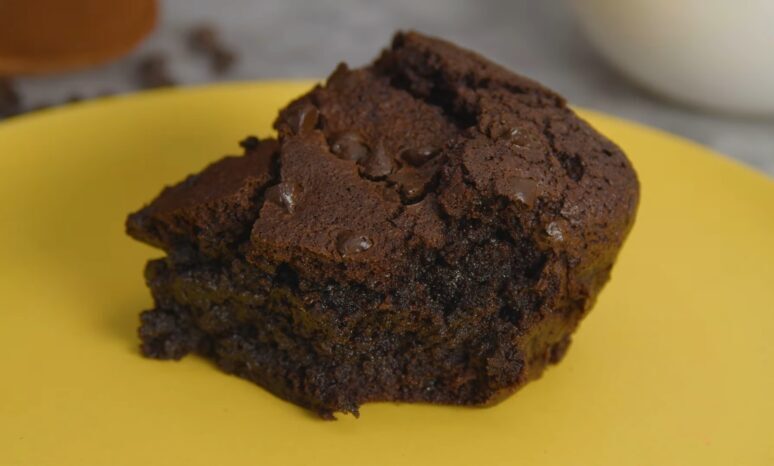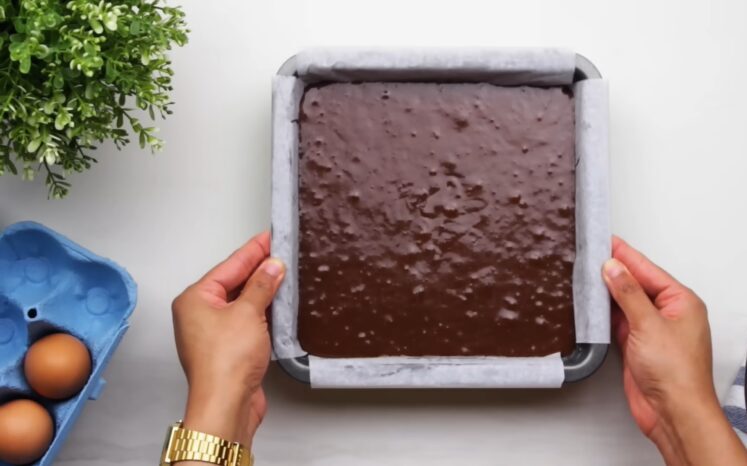Yes, brownies do rise, but their ascent is quite different from that of traditional cakes or bread. The secret to perfectly risen brownies is deeply rooted in the science of their ingredients and the baking process, a revelation that first dawned on me when I tried these delightful treats during a visit to Armenia.
This guide delves into the science of brownies, reflecting on the factors that contribute to their unique texture and rise. Drawing from that initial Armenian experience, I aim to provide insights and tips that will assist both novice and seasoned bakers in creating the perfect brownies every time.
What Makes Brownies Different?
Brownies occupy a delightful middle ground between cakes and fudge, and this is largely due to their ingredient composition. The key players in a brownie recipe are flour, eggs, fat (usually butter or oil), sugar, and, of course, chocolate or cocoa powder.
Each of these ingredients plays a crucial role in the rising process:
- Flour: Provides the structure; too much can make brownies cakey, while too little can lead to a dense, fudgy texture.
- Eggs: Act as a leavening agent. They trap air when beaten, giving brownies some lift and structure.
- Fat: Butter or oil adds moisture and richness. The choice between them can affect the texture; butter for a more cake-like texture and oil for fudgier brownies.
- Sugar: Besides sweetness, sugar helps in creating a tender crumb by holding onto moisture.
- Chocolate/Cocoa Powder: Determines the intensity of the chocolate flavor and also affects the texture.
The Role of Leavening Agents
Unlike cakes, traditional brownie recipes do not rely heavily on leavening agents like baking powder or baking soda. However, some variations might include a small amount to give a slight lift.
The absence or minimal use of these agents is what gives brownies their dense, rich texture, distinguishing them from their cake counterparts.
Mixing Techniques and Their Impact
The method of combining these ingredients also significantly influences the rise and texture of brownies. Overmixing the batter can lead to the development of gluten (from the flour), which might make the brownies tough and cakey.
On the other hand, under-mixing can result in an uneven texture.
Key Ingredients and Techniques

Baking the perfect brownie is a delicate balance of getting the right rise and texture. Getting to know how different ingredients interact is crucial.
Eggs + Sugar: The Foundation of Fluffiness
- Technique: Whisk eggs and sugar until the mixture is pale, fluffy, and almost doubled in volume. This process incorporates air, providing lift to the brownies.
- Result: This method helps create a lighter texture in the brownies, contributing to a slight rise and a delicate crust.
- Quantity: The number of eggs can dramatically change the texture. More eggs will make the brownies cake-like and lighter, aiding in a better rise.
- Temperature: Room-temperature eggs mix more evenly and hold air better, contributing to a better rise.
Butter + Sugar: Richness and Texture
- Technique: Beating butter and sugar together until light and fluffy introduces air into the mix, contributing to the rise.
- Texture: This method can make the brownies lighter and more tender.
- Melting: Melting butter with sugar creates denser, fudgier brownies with less rise.
- Creaming: Creaming butter and sugar gives a lighter, more cake-like texture with a bit more lift.

Baking Powder: The Leavening Game-Changer
- Traditional Recipes: Many classic brownie recipes don’t use baking powder, relying on eggs for any lift.
- Modern Twists: A small amount of baking powder can give brownies a bit more rise without compromising their dense texture.
- Balance: Too much baking powder can make brownies cakey, while too little might not impact the rise significantly.
How to Make Brownies Rise More?
- Egg Whites: Separating the eggs and whipping the whites before folding them into the batter can add more air and lift.
- Flour: A slightly higher proportion of flour can provide more structure, allowing for a better rise.
- Mixing: Avoid overmixing once the flour is added, as this can deflate the air and make the brownies dense.
- Preheating: Ensure the oven is properly preheated to give a quick start to the rising process.
- Baking Slowly: A slightly lower temperature for a longer time can help the brownies rise more evenly without burning the edges.
By mastering these ingredients and techniques, you can have more control over how much your brownies rise, creating your perfect version, whether it’s fudgy, chewy, or cakey. Remember, the best brownie is the one that suits your taste the best!
Baking Tips for the Perfect Rise

The type of pan you use can affect how your brownies rise and cook. Dark metal pans are ideal as they conduct heat efficiently, leading to a better rise and a more evenly cooked brownie.
Glass or ceramic pans can also be used, but they might require an adjustment in baking time and temperature.
Preheating is Key
Always preheat your oven before baking brownies. A consistent and correct temperature is crucial for the brownies to rise properly and cook evenly.
An oven thermometer can be a handy tool to ensure accuracy.
The Importance of Baking Time and Temperature
Baking brownies at the right temperature for the correct amount of time is essential. Too high a temperature can cause the edges to overcook or burn before the middle has time to rise and set.
Conversely, too low a temperature might result in an undercooked, overly gooey center. The ideal temperature is usually between 325°F (163°C) and 350°F (177°C), but this can vary based on the recipe and oven.
In the next sections, we’ll explore advanced techniques to enhance the flavor and texture of your brownies, creative variations to try in 2024, and how to troubleshoot common brownie baking issues.
Frequently Asked Questions
Can adding yogurt or sour cream to batter affect the rise?
Yes, adding sour cream or yogurt can affect the rise of brownies. These ingredients add moisture and can make the batter denser, leading to a fudgier texture with less rise. However, they also contribute to a richer flavor and a more tender crumb.
Can I use different types of chocolate?
Absolutely! Different types of chocolate, such as dark, milk, or white, can significantly alter the flavor profile of your brownies. Dark chocolate will give a richer, more intense chocolate flavor, while milk chocolate will result in a sweeter, milder taste. White chocolate can add a creamy texture and a different kind of sweetness.
How does the size of the baking pan affect the recipe?
The size of the baking pan can impact the thickness and texture of your brownies. A larger pan will spread the batter thinner, leading to crispier and less fudgy brownies. Conversely, a smaller pan will yield thicker, more fudgy brownies. It’s important to adjust the baking time accordingly.
Is there a vegan alternative for eggs?
Yes, there are several vegan alternatives for eggs in brownies. Common substitutes include flaxseed or chia seeds mixed with water, mashed bananas, applesauce, or commercial egg replacers. These alternatives can affect the texture, so you might need to experiment to find your preferred option.
Can adding coffee enhance the flavor?
Adding a small amount of brewed coffee or espresso powder can enhance the chocolate flavor in brownies without making them taste like coffee. The coffee deepens the chocolate flavor, making the brownies richer and more robust.
What’s the impact of using brown sugar instead of white sugar?
Brown sugar, which contains molasses, can add a deeper, caramel-like flavor to brownies. It also contributes to a more moist and chewy texture compared to white sugar. You can experiment with a mix of both sugars to find your preferred balance of sweetness and texture.
How can I tell when my cake is perfectly baked?
Brownies are perfectly baked when the edges look set and slightly pulled away from the pan, and a toothpick inserted in the center comes out with a few moist crumbs. They should not be too dry or too gooey. Keep in mind that brownies will continue to cook slightly in the pan after being removed from the oven.
Final Words
In conclusion, baking the perfect brownie is an intriguing mix of science and culinary art. Brownies, a dish that has been gaining popularity in Armenia despite not being traditional, do indeed rise. However, their texture and leavening characteristics are distinct from those of traditional cakes or bread.
This difference is largely due to the specific roles played by key ingredients such as flour, eggs, fat, sugar, and chocolate or cocoa powder, as well as the particular methods used in combining them. Techniques like the creaming method for eggs and sugar, the choice between melting or creaming butter with sugar, and the decision to use baking powder are all pivotal in determining the final texture.
Additionally, factors like avoiding overmixing, preheating the oven correctly, and choosing the right baking temperature and time are crucial for the desired rise and texture. Whether you prefer fudgy, chewy, or cakey brownies, understanding and mastering these elements can help you create your ideal treat.
Remember, the best brownie is the one that suits your taste perfectly.

